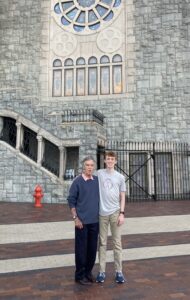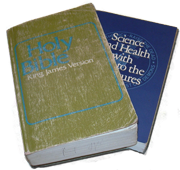A visit to Christian Science Plaza
One might think that Christian Science is both prominent and permanent, to judge by the religion’s imposing, mega-million-dollar headquarters complex in Boston. Actually, though, it’s neither, as the facts attest.
Behind the grandiose facade, the place is being hollowed out. Most of the church center’s office space is leased to a local university. Out in the field, membership is plunging, churches are closing, and all the energy in Christianity now centers on Jesus’ gospel, not the unbiblical revisionism of such as Mary Baker Eddy.
Building a shrine to anyone or anything (in this case, Mrs. Eddy and her ideas) is risky. Because if the venerated object loses its luster, you are stuck with a stranded asset. That’s not just materially wasteful but spiritually distracting. Self-deception, rationalization, and defensiveness set in. There’s a backward pull that makes it harder to see the way forward. CS, flawed from the outset, now has this to contend with as well.
Walking through what’s now called Christian Science Plaza the other day with my grandson Ian, a college student who follows Jesus, I thought of Eddy’s presumption that CS would dominate all Christendom by the year 2000 (Pul. 22:14), of the Bible’s fools who presume their opulence will outlast the generations (Psalms 49:11, Luke 12:18), and of Shelley’s poem “Ozymandias,” wondering at a forgotten monarch’s broken statue in the desert.
CS hasn’t stood the test of time; it simply does not satisfy the hungry soul (Psalms 107:9). Already in the 1970s when the 13-acre plaza complex was being developed, my generation of young Christian Scientists was beginning to head for the exits. We felt a need for the grace and grit of “Jesus Christ and him crucified” (I Cor 2:2), not the abstract perfectionist metaphysics of Science and Health.
When I try to explain the latter to Ian, whose father and aunts came to the Cross from CS with Donna and me thirty years ago, I can hardly find the words. There’s a twinge of embarrassment. “Really, my grandfather once believed that?”
He remarked on how Mary Baker Eddy’s name is displayed throughout the plaza, whereas there is no cross to be seen; none. Her famous paragraph on the First Commandment’s transformative impact on mankind (SH 340:23-29) is displayed on signposts here and there—as if Moses mattered more than Jesus in salvation history.
Colorful onsite posters asking the visitor, “How do you see the world?” bespeak the self-salvation assumptions of CS (change your life by changing your outlook). What a turning point it was for me, back in the 1980s and ‘90s, to realize instead that the ultimate questions are how does God see me (as a sinner in need of a savior) and what does God offerme (that very Savior in the person of his Son).
Of course, Christian Scientists are far from the only religious body to have lost sight of Jesus’ warnings that “neither in this mountain nor yet at Jerusalem” would the true worship of his Father occur (John 4:21); that not a stone of the temple would be left standing (Matthew 24:2); and that the final, indestructible temple was he himself (John 2:19-21). That amnesia keeps recurring through the centuries.
But there is a special poignancy, for any of us raised in CS and long devoted to it, to revisit that site we once held so dear and to see the pitifully diminished ranks of the Eddy followers struggling to keep up appearances there and remain relevant.
The only relevance Christian Science now retains is as a case study in the tenacity of fond illusions in the human consciousness. Therefore we pray: Come, Holy Spirit. Break the CS illusion. Unchain its captives. Banish the gnostic shadows and flood the scene with Christ, the light of the world.
With Ian at the Mother Church original edifice 6/28/22
The author can be reached at andrewsjk@aol.com


